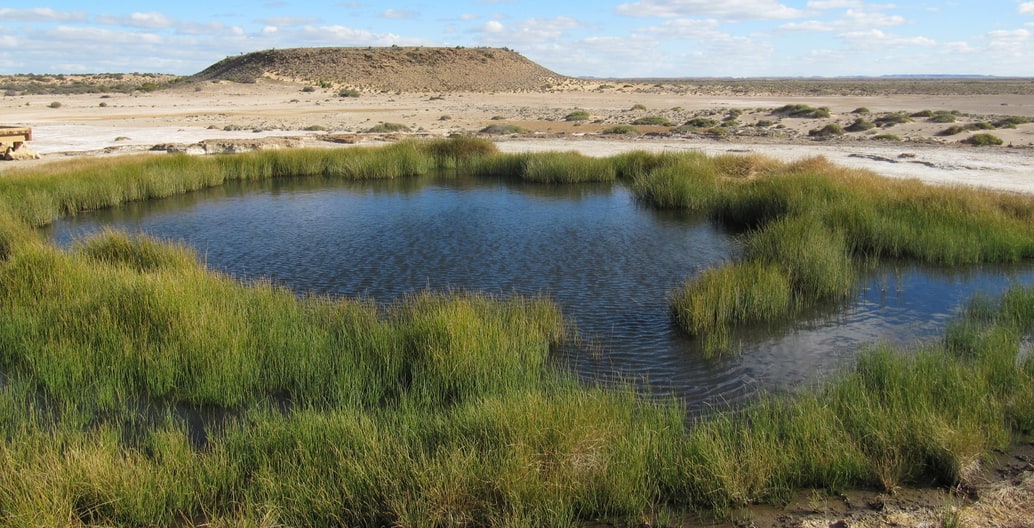
Not passive victims: Indigenous Australians respond to climate change
Climate change is disproportionately threatening the cultures and health of Indigenous peoples globally. With intimate knowledge of Country, Indigenous Australians are actively adapting to challenges, finding opportunities for new initiatives and alliances to strengthen cultural practices.
This article is part of Foreground’s 2 Degrees themed series of essays
Climate change poses both direct and indirect threats to the socio-economic, institutional and environmental systems of the world’s Indigenous populations. Australia is no exception. Yet through the formation of political alliances and establishment of on-country initiatives Indigenous Australians have been leading the way in the development of climate adaptation responses.
Firstly, there are a range of climate issues that confront Indigenous people today. Of high priority is not just the biophysical impact on plants and animals, but how these impacts in turn will affect traditional sites, knowledge and culture. For example, sea level rise and associated flooding is having a big impact in the Torres Strait while the Arabana people of the Kathi Thanda-Lake Eyre have special sites, in particular one men’s site, which is threatened by erosion from more intense flooding. Rainforest-based peoples in North Queensland are seeing first hand how more intense cyclones are impacting fishing and other significant sites.
Indigenous Australians living in low-lying tropical areas are particularly vulnerable to storm surges and floods, and many of these are cultural spaces, such as the Arafura Swamp, where the award-winning film Ten Canoes was filmed. In tropical savannas, such as Kakadu, climate impacts such as saltwater incursions into freshwater ecosystems, changing fire seasons, and the potential for spread of exotic flora and fauna, including high dispersal during the wet season and more intense storm activity, are predicted to become more frequent.
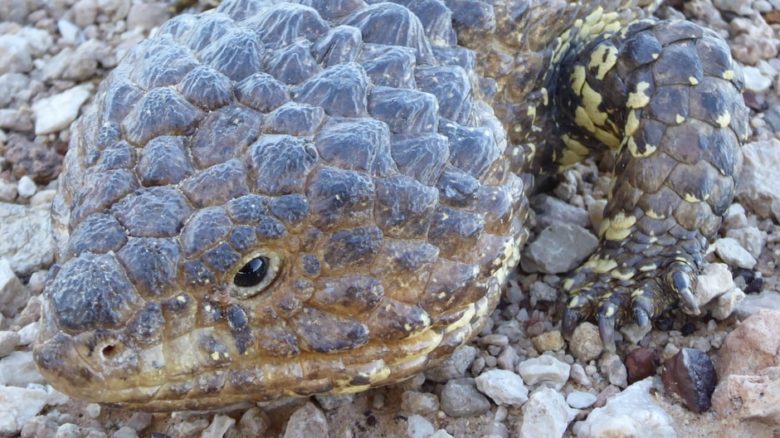
Climate change is affecting distribution of reptile and other desert species throughout Australia. Photo: Melissa Nursey-Bray
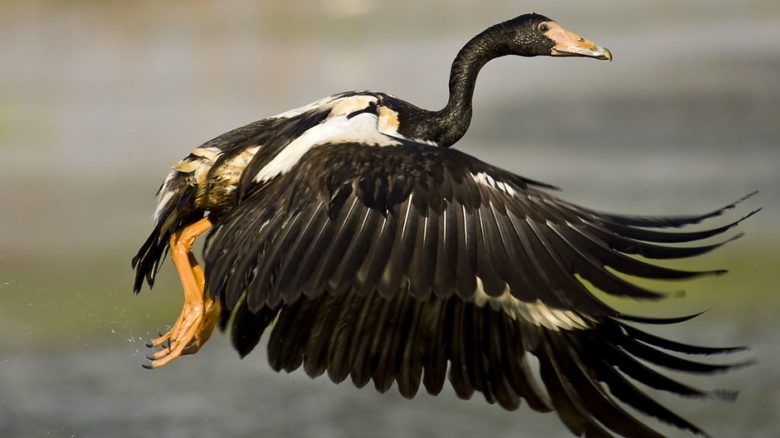
Increasing saltwater intrusion driven by climate change in the Kakadu freshwater wetlands, is likely to change the distribution of traditional food sources such magpie geese. Photo: Djambalawa
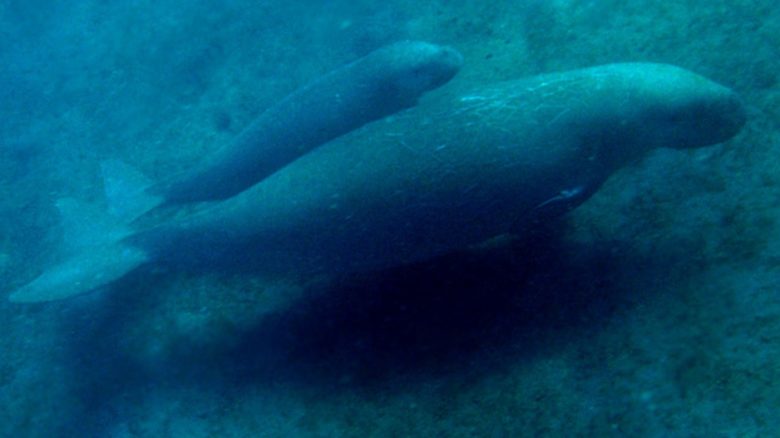
Increased storms, ocean acidification and warming will affect dugong, and the seagrass habitats on which they depend, changing their range and distribution over time. Photo: Nick Hobgood
For example, the Kakadu freshwater wetlands are a major source of sustenance for the Bininj/Mungguy people, providing waterbirds, fish, turtles, crocodiles and freshwater food plants such as water lilies. However, increased saltwater intrusion is likely to change the distribution and abundance of traditional food sources (e.g. magpie geese Anseranas semipalmata) and alter the flowering and fruiting of bush tucker which, in turn, may limit traditional hunting and gathering activities. Access to traditional hunting areas and sacred sites may be affected by sea level rises. Damage to rock art sites may occur due to changes in fire frequency and weather events.
The iconic Uluru region in central Australia is predicted to face increased hot weather, drought, fire and flash floods. These factors will combine to affect the morphology of the region but in particular may ‘weather’ the rock over time. This will lead to a honeycomb effect, literally changing the face of Uluru. These changes will have profound implications for the traditional owners, the Anangu people.
In the south of Australia, coastal sites are subject to sea level rise, and wind erosion will affect significant rock art sites. In Preminghana, Tasmania, a significant Aboriginal rock art site on the west coast, situated on a section of very friable coastal geology, is under threat. In some cases, rock markings are now often submerged by high tides, protected only by seaweed.
At another beach in south-west Tasmania, old, established trees have recently been undercut by water action as a result of changes in the high water regime. Along this eroding coastline are five rock art sites that are under threat, while shell middens along the same stretch are also disappearing. At Hazards Beach some oyster middens in the Freycinet Peninsula have been eroding for years and all middens on the south-west coast are under threat.
Shell-worker and artist Lola Greeno champions the traditions and culture of the Indigenous women of Tasmania’s Cape Barren and Flinders Islands. A national touring exhibition of her award-winning work for the Australian Design Centre is also an exhibition of modern issues. The work is part of Greeno’s response to her concerns for the environmental future of shell stringing in northern Tasmania. Tasmanian Indigenous women are worried climate change is altering the shell species they collect as some are now harder to find and are shifting in distribution. Similarly middens and sites of cultural significance to the Njarrinjeri people of the Coorong in South Australia are under threat from erosion and sea level rise.
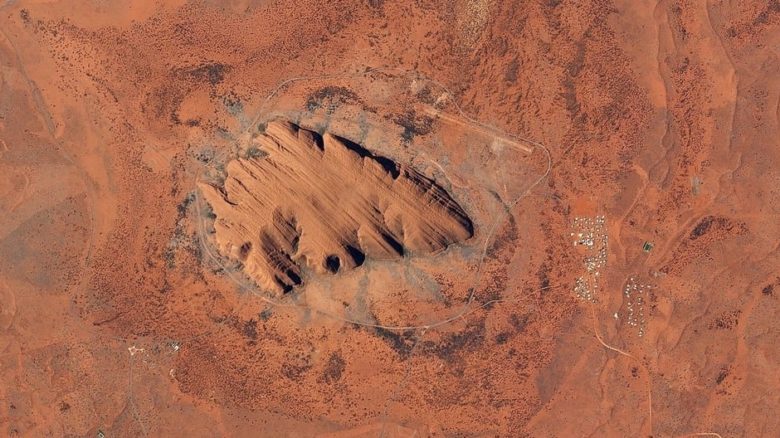
Uluru from above. It has a total circumference of 9.4km. Photo: Planet Lab
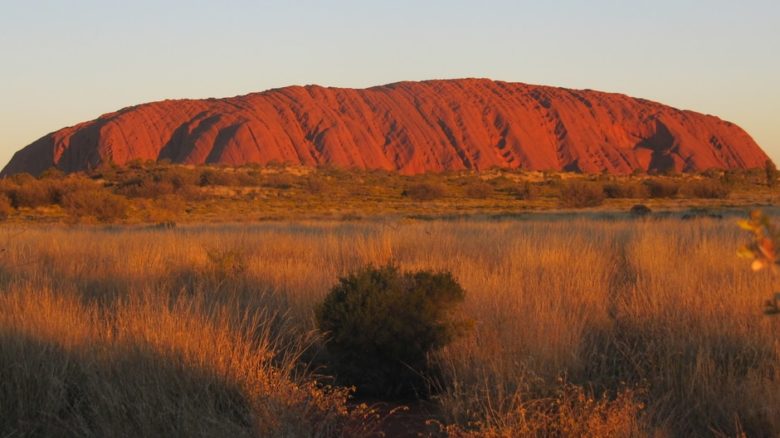
Uluru is an inselberg, literally "island mountain" dominantly composed of arkose, a coarse-grained type of sandstone. It has great cultural significance for the Aṉangu people. Photo: Melissa Nursey-Bray
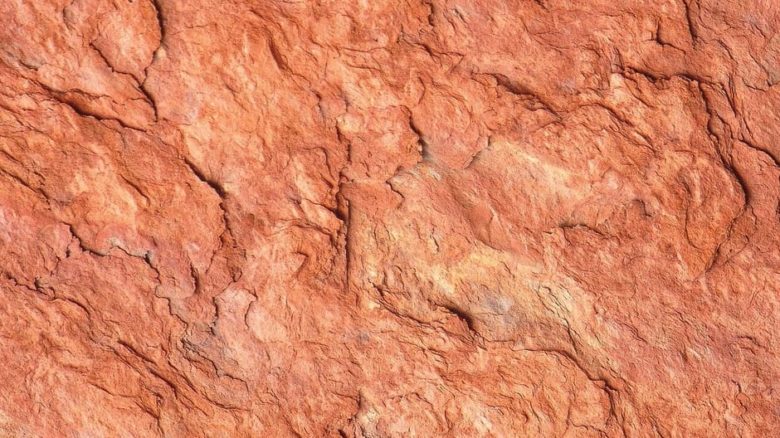
Increased hot weather, drought, fire and flash floods will erode the rock, also accelerating a honeycomb effect that will literally change the face of Uluru. Photo: Peter Jones
Another powerful example of change will be the impact on traditional harvest species such as turtle and dugong. The green turtle’s reproductive cycle is heat sensitive, with male eggs created under cooler temperatures, and female eggs at higher temperatures. Over time, more females than males will hatch causing reproductive imbalance and ultimately affecting hunting regimes. Similarly, the disappearance of beaches to sea level rise and erosion means that turtles – using a unique geomagnetic imprint to return to the same beach to breed where they were born – cannot lay eggs. Increased storms, ocean acidification and warming will also affect dugong, and the seagrass habitats on which they depend, changing their range and distribution over time. With so many changes occurring to their traditional sites and affecting knowledge systems and species, traditional culture will be further eroded.
Climate change may also exacerbate food insecurity for those Indigenous Australians living in remote areas as extreme weather events and associated flooding may disrupt limited transport routes. While there is limited knowledge of water security risks to Indigenous populations in Australia, and indigenous rights in water are not adequately recognised by Australian law and policy, Luke Knibbs and Peter Sly suggest that remote communities are susceptible to water contamination. Additionally, “inadequate water infrastructure, common in many remote communities, increases the likelihood of outbreaks of temperature-related water-borne diseases including diarrheal disease and parasitic infections”.
In contrast to the common perception that Indigenous Australians predominantly live in remote areas, 79 percent live in cities and non-remote regional areas. At first sight this means that Indigenous health in urban centres is at similar risk levels to those of the general urban population. However some factors increase their risks. For instance, overcrowded housing – a problem which affects 13 percent of the Indigenous population living in major cities in Australia, – increases the risks of communicable diseases and may be exacerbated by warming temperatures. People living in urban areas are at higher risk of death from heatwaves than those living in rural communities, largely due to the urban heat island effect.
Heat, housing and disease issues arising from climate change impacts, exacerbated by the (often) lower socioeconomic circumstances, are an additional challenge experienced by urban Indigenous Australians. For example, heat stress caused by higher temperatures is harder to adapt to when many people live in insufficient and unsustainable housing. Diseases such as dengue fever are predicted to become more widespread and Indigenous peoples will face proportionately greater risks as a result. Those living in tropical cities are going to face accelerated climate-related disease risks.
Not passive victims: multiple approaches to adapting to climate change
Despite these numerous challenges, Indigenous Australians in Australia have demonstrated an assertive agency toward meeting the challenges of climate change and have instituted a diverse array of initiatives to combat climate impacts. These include formation of alliances, carbon farming, development of climate adaptation strategies and traditional knowledge maintenance programs.
For example, in an urban context, residents in Alice Springs town camps have adapted their living practices in response to the delivery of new and refurbished houses. Town camp residents have many experiences of dealing with extreme weather events, and are (at least) bilingual, bi-cultural, and have strong cultural identities in Indigenous practice.
In the Northern Territory, the Miriwoong people of Keep River are developing a climate adaptation tool using traditional ecological knowledge based on the weather and observed environmental change. Involving extensive community engagement, this project resulted in an interactive seasonal calendar, which enables the Miriwoong people to discuss ongoing and future weather patterns, and help ensure younger generations can adapt to those changes.
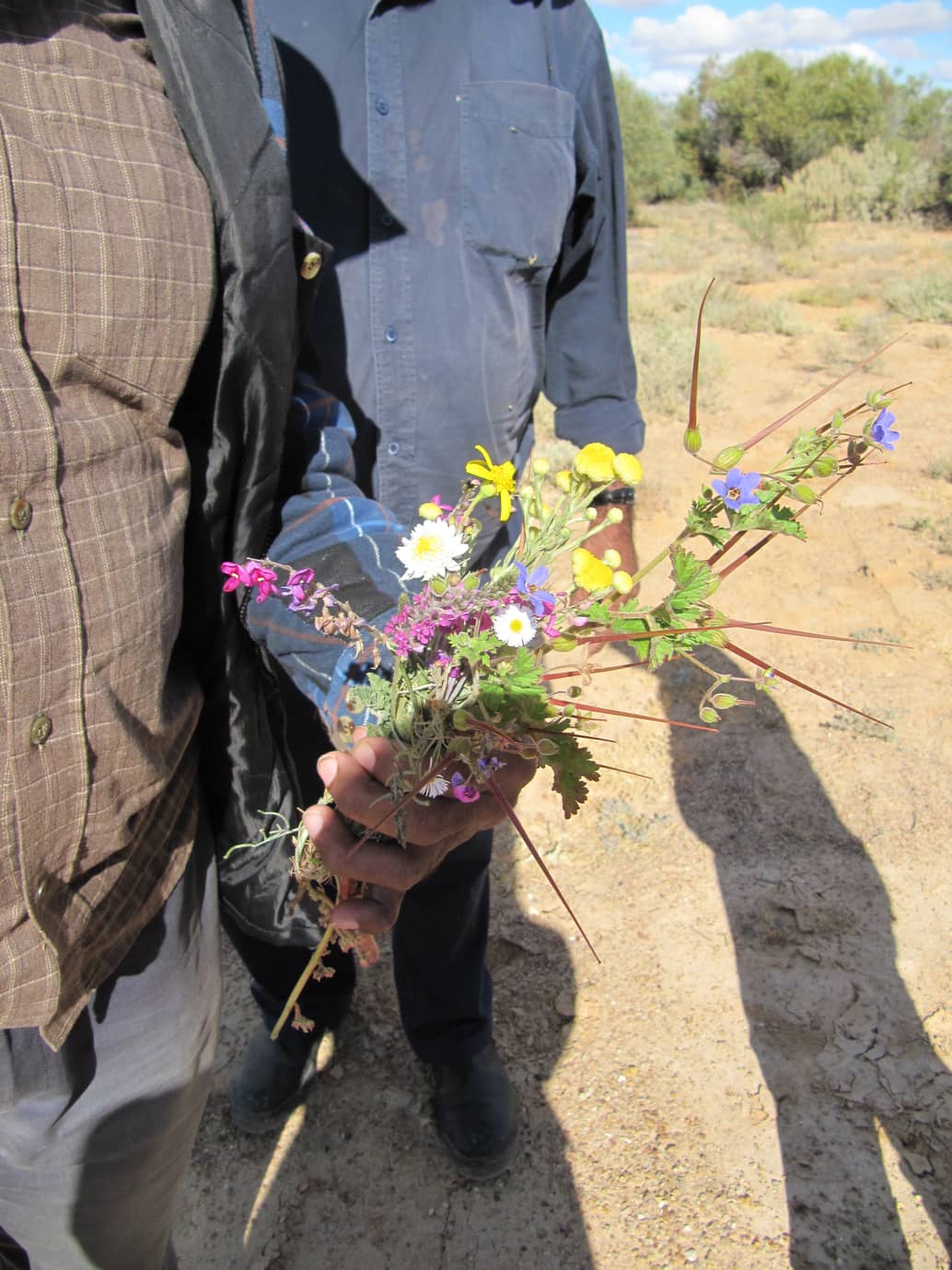
Another people, the Ngarrindjeri Nation of the Coorong, in South Australia, have been planning for change and have published the Yarluwar-Ruwe Plan: Caring for Ngarrindjeri Sea Country and Culture. They have clearly registered intimate experiences of changing climates and their impacts:
Ngarrindjeri have long experience with climate change and sea level changes. Our Creation stories tell us about the flooding of our lands and the changes to rivers and coast lines. Our Old People have watched the impacts of the degradation of our lands and waters since European invasion. We recognise the huge impacts of global warming on our lands and waters and all living things.
In recent years we have observed changes in our local environment that tells us that climate change is a reality. We see that the breeding behaviour of birds is changing, and the fruiting and flowering of our bush foods is changing. We have watched our fresh water holes dry up or turn salty and we’ve seen our coastal camping places and middens washed away by rising sea levels. When we lose these places we lose not only part of our cultural heritage, but we also lose an irreplaceable record of Ngarrindjeri adaptation to climate change in the past.
Taking a different approach, some groups are entering into carbon farming agreements, designed to help mitigate and adapt to climate change while building livelihoods. One such agreement is the West Arnhem Land Fire Abatement Project, a partnership between the Aboriginal Traditional Owners and Indigenous ranger groups of the plateau, Darwin Liquefied Natural Gas (DLNG), the Northern Territory Government and the Northern Land Council. Although there are contested ideas of the value and intensity of burning regimes, through this partnership Indigenous ranger groups are implementing strategic fire management across 28,000 km2 of Western Arnhem Land
The aim is to reduce the frequency of wildfires and so offset greenhouse gas emissions from the Liquefied Natural Gas plant at Wickham Point in the city of Darwin. Operating since 2006, Indigenous rangers have offset more than two million tonnes of C02 through early dry-season burning. This program has not only helped prevent destructive bushfires but has enabled the conservation of rainforest, and protection of local wildlife and rock art sites. It is an approach that marries Western science with traditional knowledge. As Nigel Gellar, Senior Ranger of Warddeken Land Management notes: “It is hard work to live out here in the bush and look after the country. Fighting bushfires is particularly hard work. But hard work is good, especially good for the young people.”
The Aboriginal Carbon Fund is another program, set up in 2010 to help other Indigenous organisations to earn money from projects that sequester carbon in the soil. For example, the Karlantijpa North Kurrawarra Nyura Mala Aboriginal Corporation, allocated funds for carbon credits under the Australian government’s Emissions Reduction Fund. In this program, the Corporation secures payments for sequestering 24,100 tonnes of carbon by undertaking savanna burning early in the season. The Reducing Carbon Building Communities fund (RCBC), backed by the Aboriginal Carbon Fund, was established last year to support social and cultural causes, as an alternative ‘boutique restaurant’ to the government’s cheaper ‘McDonald’s’ offsets.
Finally, many Indigenous groups are asserting their agency via the establishment of their own Climate Adaptation Strategies including in the Torres Strait, Kowanyama in the Gulf of Carpentaria and for the Arabana people of the Kathi-Thanda Lake Eyre region.
Adapting Forwards
These examples highlight that Indigenous peoples across Australia are asserting their own agency and responses to the climate challenge. Yet there is still a lot to be done to assist efforts. There are many barriers, including navigating the legacy of colonisation and addressing self-determined ideas of health and well-being on climate-changed country. How to engage with traditional knowledge, how to find ‘fit’ between Indigenous and Western governance regimes and, of course, how to fund such enterprises are also pressing challenges.
Traditional knowledge is threatened, current funding not ideal, and the rate and shape of social change inhibits knowledge maintenance. The experience of large urban Indigenous groups is still largely overlooked. Further, while adaptation has been an ongoing practice for Indigenous peoples for millennia, the present acceleration of the need to adapt is a new challenge. The development of future Indigenous-led climate change adaptation initiatives is partly dependent on the capacity of other environmental management institutions to adapt their regimes in ways that recognise and incorporate different forms of governance and models of environmental management in socially just and equitable ways. As Wayne Barbour and Christine Schlesinger note:
Indigenous Australians do not want to become spectators… [give] away knowledge or be labourers to Western conservation agendas. They want to be active partners in developing better understandings of the environment and implementers of management that reflects shared agendas.
This article is part of Foreground’s 2 Degrees themed series of essays
–
Melissa Nursey-Bray is Associate Professor in the Department of Geography, Environment and Population at the University of Adelaide, and Director of the Research Cluster ACE (Adaptation, Community Environment). She explores how communities become involved in decision making, what factors affect their relationship with the environment, and how to support the development of community based environmental governance. Her current work focuses on community-based climate adaptation, particularly, Indigenous adaptation to climate change.


